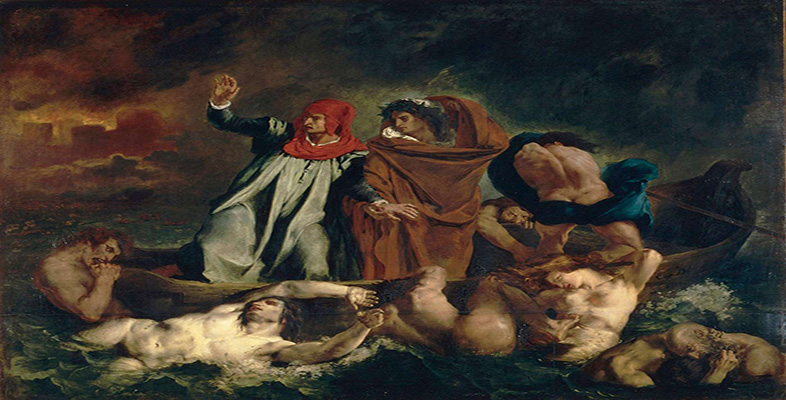5 Romantic themes and subjects in Delacroix’s art
5.1 Sardanapalus – a disconcerting subject
Many of Delacroix’s contemporaries found the subject matter of his Sardanapalus excessive and unpalatable. This was the opinion of an anonymous reviewer in the Moniteur Universel on 29 January 1828, who expressed the view that ‘the name [of Sardanapalus] has become synonymous with all that is most ridiculous and vile about debauchery and cowardice’. Furthermore, it was unlikely that ‘an effeminate prince should magically become a tactician and a warrior capable of defending Nineveh’ (quoted in Spector, 1974, p.80). Delacroix’s subject disturbed because it was the precise antithesis of classical heroism. Sardanapalus appears to be the ultimate anti-hero, world-weary, defeated, egotistical. Stendhal, while admiring Delacroix’s energy, was disturbed by the ‘satanism’ of the painting. Such interpretations were reinforced by, for example, the dark, hellish chasm at the bottom of the picture, which might be compared to the waters in the Barque of Dante. The painting shows an absolute ruler about to go up in flames with more than a lifetime’s provision of sex and violence. Here is no military hero or ruler offering a moral example, but a death scene worthy of Don Giovanni or the Marquis de Sade’s dying man. The moral clarity and certitudes of Neoclassicism, born of the Enlightenment and perpetuated in revolutionary ideology, have given way to a futile, self-defeating hedonism.
